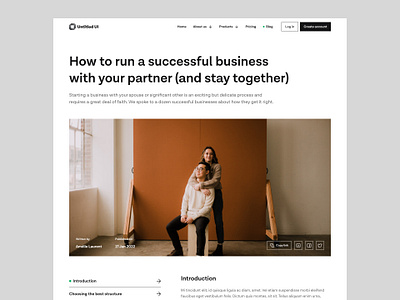Recognizing the Function of Responsive Layout in Modern Web Site Advancement
In today's digital landscape, responsive style is no longer a high-end yet a need in website growth. The importance of responsive style expands past individual experience-- it is additionally a crucial aspect in search engine optimization and access.
Relevance of Responsive Design
In today's electronic landscape, the significance of receptive style in site growth can not be overemphasized. As customers significantly count on a selection of tools-- ranging from home computer to smart devices and tablets-- making sure a smooth individual experience throughout all systems has ended up being necessary. Responsive design permits websites to instantly adjust their layout and capability based upon the screen dimension and positioning of the tool being utilized. This flexibility improves user engagement and contentment by offering consistent accessibility to web content without needing hand-operated changes such as scrolling or zooming.
Moreover, receptive design is essential for seo (SEARCH ENGINE OPTIMIZATION) Online search engine like Google prioritize mobile-friendly websites in their search results page, indicating that a responsive style can dramatically affect a site's visibility and position. This optimization not just improves the customer experience however also drives natural traffic and boosts the capacity for conversion and profits generation.
On top of that, receptive style offers businesses an affordable option by removing the demand for numerous variations of a web site. By enhancing internet development procedures and minimizing upkeep initiatives, business can allot resources a lot more effectively, inevitably causing enhanced return on financial investment. Therefore, receptive layout is crucial in today's competitive digital atmosphere.
Crucial Element of Responsive Design
To properly execute responsive design, it is vital to concentrate on numerous crucial elements that make certain ideal functionality and individual experience throughout varied gadgets. One of the essential elements is the versatile grid format, which enables designers to produce fluid grids that automatically readjust to different screen dimensions. This makes sure that material maintains proportionality and readability, despite the tool being made use of.

In addition, touch-friendly navigating is important for responsive style. Carrying out conveniently tappable switches and intuitive motion controls boosts functionality on touchscreen devices. Prioritizing performance optimization is likewise essential, as it enhances packing times and minimizes bounce prices, especially on mobile connect with variable rate.
Finally, using a mobile-first strategy makes certain that visit their website the layout is originally enhanced for smaller displays prior to broadening to fit desktops. This method assures that crucial capability and visual appeals are preserved throughout all platforms, inevitably boosting the total individual experience.
Impact on Customer Interaction
Responsive design substantially affects customer involvement by improving ease of access and fulfillment throughout numerous gadgets (Website Design). By making sure that an internet site's format adapts seamlessly to different display dimensions, receptive layout allows individuals to accessibility web content easily, whether they are utilizing a smartphone, desktop, or tablet .
Moreover, receptive design contributes to faster web page packing times, which is vital for preserving individual interest. Users are extra likely to desert a site if it takes too lengthy to tons, particularly on smart phones. By maximizing efficiency for varied systems, receptive layout reduces loading hold-ups, maintaining individuals engaged and lowering bounce prices.
SEO Conveniences of Responsive Style
While improving customer experience is a primary goal, receptive layout likewise plays an essential function in boosting an internet site's search engine optimization (SEARCH ENGINE OPTIMIZATION) Responsive layout ensures that a web site adapts to numerous display sizes, getting rid of the need for separate mobile and desktop versions.
In addition, responsive design aids in faster page loading times, an important consider SEO. Online search engine favor sites that load rapidly, acknowledging that individuals are extra most likely to desert websites that take too long to display. By employing responsive design, developers can streamline and optimize images content, guaranteeing reliable filling and boosted search engine positions.
In addition, a natural link framework throughout tools streamlines the indexing process for online search engine, improving crawl efficiency. This harmony in URLs enhances a site's authority and integrity, causing enhanced visibility in search results page. In summary, responsive layout is not simply a trend but a basic component of search engine optimization strategy, guaranteeing sites are both user-friendly and internet search engine suitable.
Implementing Responsive Layout Methods
In the world of modern web growth, carrying out responsive style approaches is similar to crafting a functional canvas that adjusts perfectly to different display measurements. Another important method involves utilizing media inquiries, which allow programmers to use different styles based on the attributes of the tool, such as height, width, and resolution.
Receptive pictures and media are also crucial parts. By making use of strategies like CSS media queries and the HTML 'photo' aspect, designers can serve properly sized pictures based on websites the individual's tool, maximizing tons click to find out more times and boosting customer experience. In addition, the incorporation of liquid typography ensures that text is legible and cosmetically pleasing on any kind of display, attained with scalable systems like 'rem' and 'em'.

Conclusion
Responsive style constitutes an important facet of contemporary website advancement, substantially enhancing customer experience throughout a range of tools. Eventually, implementing responsive style techniques makes certain enhanced accessibility and functionality, providing sites extra user-centric and reliable.
To successfully apply responsive style, it is essential to focus on numerous key aspects that ensure optimal performance and customer experience across diverse tools.Receptive design significantly influences individual involvement by boosting ease of access and contentment across various gadgets. By making certain that a website's layout adapts effortlessly to various display dimensions, receptive layout allows customers to gain access to web content easily, whether they are using a desktop computer, tablet computer, or smart device.While enhancing user experience is a primary goal, responsive layout also plays a crucial function in enhancing a web site's search engine optimization (SEO)Receptive design constitutes a necessary element of modern internet site growth, dramatically boosting customer experience throughout a range of gadgets.